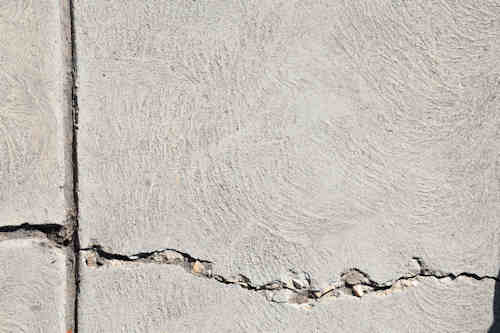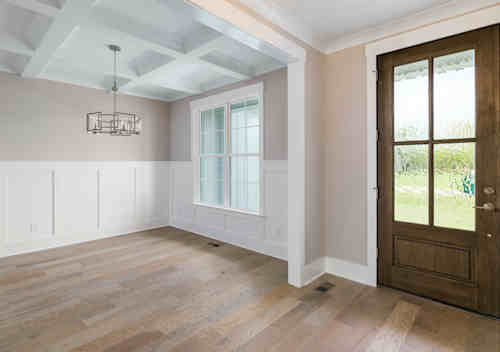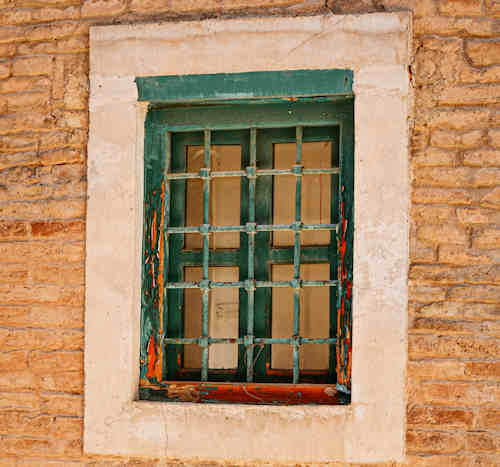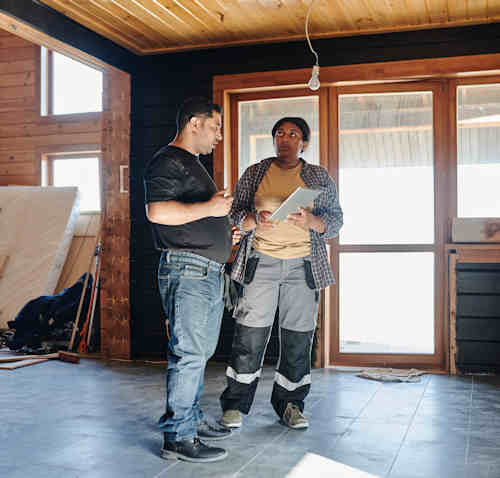
When you take the exciting first steps into visiting prospective homes it is important to know that many homes have their respective issues and that it takes an experienced and learned eye to spot some of the less visible and more serious of them. However, you don’t have to be a professional home inspector to be able to spot when a recent change or fix has been made to a home.
Sellers are always going to feel compelled to present their homes to prospective buyers in the most flattering ways possible. A fresh coat of paint, new blinds, etc. Some may go so far as to hire a staging company to decorate their home tastefully and attractively but perhaps, at times, to distract would-be buyers from blemishes or faults that might otherwise change the course of a sale. As a buyer, when you come prepared, it becomes much easier to see past the hype conjured by the sellers and maybe their staging experts. That preparation is the purpose of this article; to show you how to spot potential issues and weed out the truly undesirable houses before the expense of hiring your home inspector.
Let’s take a look at what you’ll need to know going into a prospective home for the first time. We’ll start with…
Exterior Inspection:

Foundations
It’s essential to look at the foundation of the home. Often you will find minor cracks even if they are painted over. If they are small and mostly vertical in nature, it shouldn’t be a problem. Houses do settle over time and the curing of new concrete can causing minute pressure changes resulting in minor cracks. On the other hand, if the cracks are bigger, more numerous, and more horizontal, you could be looking at a larger shift that the house has taken. Perhaps a tree came down in a storm and struck the house pushing it just a bit to one side. This could be a sign of a very serious issue. If you do run across this situation and you very much like the home, run it by your home inspector to see what he/she thinks about the issue but don’t take it lightly by any means.
Water can also be a culprit when it comes to foundation flaws. Once again, a reputable inspector, especially when being directed prior, will be most instrumental in identifying potential serious damage, be it in the past or future.
Lastly, if you find that copious amounts of mulch are piled up around the foundation, this can also be a sign that damage is being covered. This too will be discovered by a reliable home inspector. As well, if there is a fresh coat of paint on the foundation, have your inspector take a close look – with you present, if you can manage it.

Roofing
A well-installed roof should be fairly smooth in its appearance, even if it’s dimensional in its design. If the roof is fairly new and appears puckered, it may have been installed improperly or worse, was installed over the top of a pre-existing layer of roofing. I have seen this done many times and it always lends itself to liability. It is important to know what is underlying the intended roofing material. Not to do so leaves the distinct possibility of soft or rotten wood, and worse, roofing is heavy. No house is meant to have multiple layers of roofing on its roof. Lastly, all reputable roofing materials come with their respective warranty, and all of them will be nullified by a multi-layer install. Imagine the mayhem that a failure could cause the average homeowner with no warranty. I can tell you that some towns will allow for multi-layered roofing installs. For the reasons I have just put forward, I don’t recommend having it done this way or buying a home that has been done the same.
It should be noted, to be fair: when it comes to a puckered-looking roof that is a very recent install, some new roofing jobs will require some time for settling. The sun on a roof will cause it to settle and level into place in about two weeks of Summer weather, longer if done in the Fall or Spring. If the roofing job is not recent, as described above, this is a potential concern and bears mentioning to your professional home inspector.
Windows and the adjacent surrounding area
Window installations done well will be clean and, with good measurements before insulation, will fit properly. The exterior will have been well caulked using thin lines of caulk. If you find that there is staining from water drainage, especially on newer windows, this will be a big item on your inspector’s to-check list. Things like damaged screens on windows are generally not big issues and can be repaired easily. It is advised that you test the opening and closing abilities of the windows especially when it comes to casement-style windows as they contain more complex hardware.

Utilities
It is always good to come to a home with all the necessary upgrades or better, and recent models on the items that make up the facilities of the home. This would be the plumbing – including sinks, toilets, showers, washer and dryer hookups, as well as the furnace and air conditioning. Having to replace any of these items is, generally speaking, not overwhelming. However, if you have to replace a good number of them, you will want to bring that to the attention of your inspector. There are, at times, smaller telltale things like excessive build up of calcium on plumbing valves that could suggest that hard water is present and has not been well mitigated with a water softener and/or filter. Hiring a plumber is rarely an inexpensive venture especially when several valves and the like are in need of replacement. Once again, these are not insurmountable, but they could suggest a certain level of neglect that you, as the new homeowner will not want to become responsible for.
In the end, if you’re not an expert at this sort of thing, it is suggested that you take note the age of the furnace, A/C unit and water softener and refer the info to your inspector. These all have expected life spans and knowing their age, you will be able to predict your future expense which may affect your conclusion.

Siding
Whether it’s wood, vinyl, or fiber-cement should be hung level and without blemish. Warped siding can point to an issue with the installation, the house itself, or, depending on the material, in a place where natural and reflected sunlight may be adding too much heat at times during the day (vinyl, for instance, will begin to warp at around 150 degrees).
Fiber-cement siding is very pretty on most homes. It is more expensive, and more complicated to install, requiring a different set of skills than the more typical vinyl siding. Most homeowners will not attempt Fiber-cement siding installations or repairs on their own. Tell-tale signs of amateurish installs are bad caulking at joints and nail holes, and warped or improperly leveled planks. This type of siding is also to be kept fairly meticulously on the job site while awaiting installation; on edge and evenly supported, and covered in rainy weather. Failure to do so can warp this expensive siding leaving the contractor the difficult choice of either replacement or settling for a less-than-perfect install.

Air Conditioning Units
If you can, take pictures of the unit and any documentation found. There is often a placard to be found on the unit. This will give you the model and the age of the unit. It is important to do some research on A/C units. They are rated differently and it will be helpful to know how long the unit will last to realize its maximum value.
Also very important: if the unit is running, determine how loud it performs. While modern A/C units are designed to be quieter than their predecessors, it’s still a good idea to see whether you can tolerate the noise.
Your inspector will certainly check the HVAC condition in your prospective home both inside and out. If you do see or hear something you feel is concerning, it is worth mentioning to him/her.
Interior Inspection:

Flooring
Whether wood or laminate or tile, it’s always a good idea to take a close look at what you’re buying.
Things like undulations in the flooring, or lifted tile, both of which can be caused by many things, are often a telltale sign that either the installation was performed by a non-professional or another issue may be lurking underneath. If you spot this sort of imperfection, be sure to mention it to your inspector as a point of particular interest.
If the floors seem less than level, do the same; mention it to your inspector. It could be a sign of simply aged settling of an older house. But, it could also be something more serious. Again, your inspector will be better able to let you know what you might be getting into.

Ceilings
The ceilings in a house are easy to read. Everything from stains from plumbing, or condensation from air conditioning ducts, undulations in the ceilings, that could be from many things including roof leaks, poor installation, maybe even just age of a very old house. If you see anything that, if easily fixed, wouldn’t be a problem for you, be sure to point it out to your inspector.

Walls
Undulations. These are not so serious in older homes. Homes do move; expand and contract, and over the years can lead to imperfections that homeowners get used to and may not even notice anymore. Most of the time they are fixable. Be it wallboard or plaster, it’s generally fixable.
A typical homeowner fix by those who do notice, would be that of the taping on the sheetrock joints (where the panels meet). Doing the taping is a true skill not mastered by most. It’s a specialty that most handymen might take for granted. Bad taping jobs are a dead giveaway that the homeowner or inexperienced contractor did the work. depending on where you find it, it may or may not be an issue for a prospective buyer. It can be redone fairly inexpensively most of the time. If you see it, ask about it. If you are satisfied with the answer, move on. If not, be sure to point it out to your inspector.
Walls that are stained with long streaks are made from either rain leaks, plumbing leaks, or condensation from an A/C duct. The worst of the three is condensation. This kind of water can take time to show itself. The big issue then is that it might point to a possible mold problem. Most mold issues can be picked up with even a mildly sensitive nose most of the time. If you can’t rule the source out as being a rain leak or plumbing issue of the past, you will need to bring this up with your inspector. If I come across this sort of thing, I walk away. There are plenty of houses on the market without mold issues.

Windows
Definitely not to be overlooked. Look closely; open and close the windows and see if the lock well. Wood windows, especially, can warp; be difficult to move, close, open, or lock. As well, the cheaper end vinyl windows can have potential issues as well. The frames can begin to come apart over time. If you see gaps in the corners of the frames, these will be “mechanically welded”; a nicer term for unwelded joints held together by screws. If you come across one of these, be careful of the counterbalance. If the frame is loose, it will be likely that the counterbalance will be broken as well, and the window sashes will not stay put.
It’s a good idea to look for water staining on the sides and underneath windows whether the stains are inside or outside. I once spent a week on a replacement window job of 5 windows because of all the rotted wood inside the walls that had to be replaced.
Check for quality (if windows are new). Look for brands like Marvin, Pella, and Andersen are all very good wooden windows. Certainteed, Alside, and Jeld-Wen are very good vinyl windows. I have worked with them all.
If the windows are older – Especially in very old homes, well-preserved single-pane windows can be quite beautiful. However, they will not be efficient by today’s standards. Many people like them, just the same. See that they open and close without issue. If they are cumbersome or don’t open, they will need repair or replacement. Once again, speak with your inspector, should you move forward with the purchase of the home.
Please Note: Things like damaged screens on windows are generally not big issues and can be repaired easily. Other aspects, like hardware – especially on casement style windows should be inspected closely to see if they work properly as they are of more complex hardware and not so easily replaced.

Is the Home a Present Dwelling or a Contractor Flip
Good contractors are very often highly skilled renovation experts capable of doing great work. Many are very concerned about their reputations as well, especially if they do a lot of work in highly reputable towns. However, it should be understood that some other contractors are also quite skilled at being able to hide imperfections and, as opposed to most homeowners who might take more pride in their home, may well use cheaper products and materials to keep their costs down, as you might expect. This is compared to actual homeowners who, on the other hand, are more likely to have some emotional attachment to the home and will invest in better products and outcomes if they can manage.
Your realtor will likely know the contractor and may be able to give a good reference. Still, as a side note, it’s good to do some research on your seller in these cases. As well, your inspector may know the contractor’s reputation and could have insights to share, good and/or not-so-good.
Visit The Local Building Department
If you see that there are some recent upgrades or changes made to the home, it’s a good idea to go to the building department and see that all the right permits were applied for and completed (inspected). If you find that there are some things unaccounted for, you may want to think twice about this complication. As an example, if electrical work performed on the site was supplied by an unlicensed electrician, you could be taking a big risk.
There are a surprising number of sellers and contractors who are unaware of, or will try to subvert the local building codes to save tax money that would be levied after the town’s inspectors give their okay on the new work done. They do so by not acquiring all the necessary permits, and doing one or two things that the permits they have don’t cover. This behavior could very well could cost the homeowner a little more in fees and their tax bill going forward. But the fact that a poorly worked house could cause a fire, amongst other things, that might destroy the home, put the homeowners or renters in peril as well as firefighters, other first responders and maybe their neighbors. It’s decidedly worth the price paid to do it right if nothing more than piece-of-mind and the solemn pride of living up to civil responsibility to your neighbors and town.
There is also the potential issue of “omitted taxes”: If there have been improvements made in recent years that the town doesn’t know about, you, as the new homeowner, could be subject to at least a couple of years of the previous owner’s tax debt. Oh yes, the town will get their money – out of the house, no matter who owns it at the time of discovery. In the end, it’s good to know who is accountable before you sign to buy any home.
Conclusion
In closing, if you come upon a house that you really like and don’t see any insurmountable troubles with the home, be sure to visit it one more time again, once the initial enamoring has had a chance to wears off a bit. This generally allows a would-be buyer a better chance at a more objective view of things.
I wish you the best of luck to you in your search,
Berk
